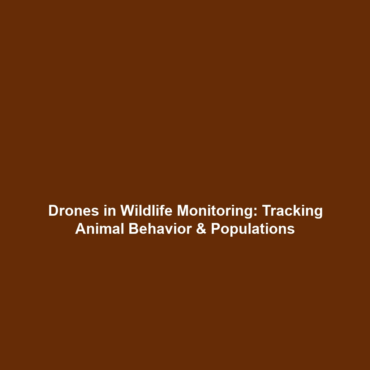How Tools from the Human Genome Project Have Revolutionized Fields Beyond Genomics
Introduction
The Human Genome Project (HGP) has not only advanced our understanding of human genetics but has also laid the groundwork for innovative tools that revolutionize various fields beyond genomics. These include critical applications in forensics, agriculture, and evolutionary biology. The implications of these advancements extend far beyond just human health and medicine; they provide vital insights that impact biodiversity, food security, and criminal justice systems. This article explores how the tools developed during the HGP have transformed these disciplines, shaping future research and applications.
Key Concepts
Genetic Tools and Techniques
At the heart of the revolution are several key genetic tools that emerged from the Human Genome Project:
- DNA Sequencing: Advanced sequencing techniques allow for the rapid analysis of genetic material, paving the way for intricate studies in various fields.
- Polymerase Chain Reaction (PCR): This technique enables the amplification of tiny DNA samples, which is crucial in forensic science for analyzing evidence.
- Bioinformatics: The integration of computer science with biology has enhanced data analysis, facilitating research across disciplines.
Applications and Real-World Uses
The tools derived from the Human Genome Project have diverse applications:
Forensics
In forensics, DNA profiling has become a standard procedure for solving crimes. By analyzing genetic material found at crime scenes, investigators can identify suspects with remarkable accuracy.
Agriculture
In agriculture, genome editing technologies such as CRISPR have revolutionized crop improvement, leading to higher yields, disease resistance, and climate resilience.
Evolutionary Biology
In evolutionary biology, tools from the HGP have facilitated the study of genetic variation and evolutionary relationships among species, enhancing our understanding of biodiversity.
Current Challenges
Despite their successes, the application of these tools faces several challenges:
- Data Privacy: Ethical concerns regarding genetic data usage and privacy are paramount, particularly in forensic applications.
- Technological Accessibility: High costs associated with genetic testing can limit access for low-resource settings or developing nations.
- Regulatory Hurdles: Navigating the complex legal and regulatory landscape for genetic technologies presents challenges for researchers and practitioners.
Future Research and Innovations
The future of tools developed from the HGP looks promising, with expectations of upcoming innovations:
- Next-Generation Sequencing: Continued advancements in sequencing technology are expected to improve speed and reduce costs.
- Enhanced Bioinformatics: AI and machine learning integration in bioinformatics will deepen insights across various fields, enabling more nuanced analyses.
- Precision Agriculture: Future developments may lead to more targeted genetic modifications for environmentally sustainable agricultural practices.
Conclusion
In conclusion, the tools developed through the Human Genome Project have fundamentally transformed forensics, agriculture, and evolutionary biology. Their diverse applications signify the far-reaching impact of genetic research in solving contemporary challenges. As we look to the future, it is crucial to address the associated ethical, regulatory, and accessibility issues while embracing the potential for innovation. For further exploration of related topics, consider reading our articles on Genetic Technology Innovations and Ethical Issues in Genomics.


